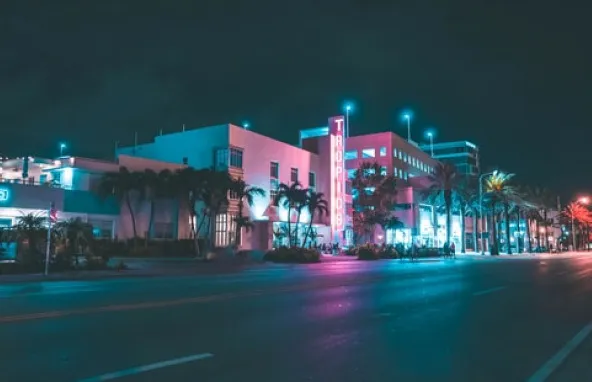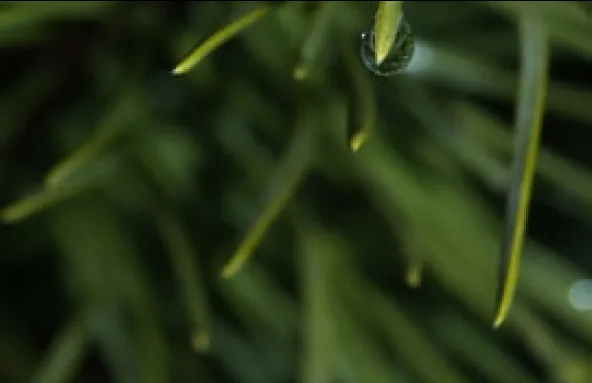Art Thunderonthegulf Craft: Master Maritime Art for Digital Success
What draws thousands to a windswept October weekend in Orange Beach, Alabama? What compels artists—painters, potters, woodworkers—to haul their latest creations to a festival that stands as much for spectacle as it does for tradition? For anyone navigating the world of coastal artistry or hoping to master maritime art for digital success, these are more than academic questions. They touch on culture, economics—and above all—community.
The upshot is this: art thunderonthegulf craft has evolved from a modest local gathering into an engine of creative energy and regional pride. Yet its story is not just one of nostalgia or scenic paintings; it’s a living example of how regional culture can fuel both artistic relevance and digital reach.
This guide unpacks the essential elements of art thunderonthegulf craft through data-driven analysis and concrete examples—tracing historical context, core themes, economic impacts, and what makes this movement indispensable for any creator seeking broader resonance in today’s fast-moving digital marketplace.
Introduction To Maritime Art: Scope And Significance Of Art Thunderonthegulf Craft
Few regional traditions illustrate the fusion between natural beauty and cultural storytelling quite like art thunderonthegulf craft. But what exactly sits at its heart?
At its most basic level, this movement encompasses every manner of artwork—paintings alive with wind-whipped seas, driftwood sculptures shaped by tides rather than chisels, pottery etched with stylized wave motifs—all inspired by the Gulf Coast’s striking landscapes. Originating around the late 1990s alongside Orange Beach’s now-iconic Thunder on the Gulf powerboat races, art thunderonthegulf craft began as an informal meeting point between local artisans keen to showcase their wares while engines roared offshore.
Over time something unexpected happened. The intersection of adrenaline-fueled sport and contemplative artistry became a fertile ground where new traditions flourished. The Arts ThunderontheGulf Crafts Festival soon emerged—a platform blending classic Creole patterns with contemporary coastal chic.
All of which is to say: This isn’t merely decorative hobbyism or tourist trinketry. Each piece tells stories drawn from centuries-old indigenous weaving methods; from hard-won battles against hurricanes; from daily life along unpredictable shores.
Consider these recurring features:
- Vivid Color Palettes: Paintings capture not only seafoam greens but also dusk purples reflected across tidal flats.
- Tactile Textures: Driftwood is left rough-edged; ceramic glazes echo wet sand.
- Narrative Themes: Every artifact channels environmental memory—ranging from oyster-shell jewelry recalling subsistence economies to textiles evoking lost coastal settlements.
The remarkable aspect of this phenomenon is how quickly it outgrew its origins. Within two decades, what started among neighbors became one of the Southeast’s largest artisan festivals—with hundreds of booths representing painters refining Gulf light in plein air studies and sculptors upcycling beach debris into functional art.
Understanding these historical currents helps us predict where value will flow next—in creative markets increasingly shaped by global tastes but rooted in hyperlocal authenticity.
The Historical Impact And Economic Reach Of Art Thunderonthegulf Craft
It would be easy enough to dismiss events like the Arts ThunderontheGulf Crafts Festival as seasonal diversions for tourists or second-home buyers angling for unique décor. That view, however, misses both scale and substance.
Let’s consider some specifics:
| Key Metric/Attribute | Details (2024–2025) |
|---|---|
| Annual Timing & Duration | Late October (Fri-Sun), aligning with powerboat races; open 9 AM – 6 PM daily |
| # Artist Booths/Participants | Several hundred vendors across disciplines |
| Total Attendance Estimate | Thousands annually—from locals to out-of-state visitors |
| Main Artistic Categories | Pottery • Woodwork • Painting • Jewelry • Textile arts |
| Cultural Lineages Merged | Cajun-Creole • Native American • Modern Coastal Chic |
| Sustained Economic Impact | Tangible increases in tourism revenue & artisan sales |
A few standout observations emerge:
- This festival isn’t simply entertainment—it generates real financial momentum each autumn via vendor sales, lodging occupancy spikes, restaurant activity and collector interest.
- The diversity in materials—from regionally sourced woods to recycled glass—means ecological sustainability underpins commercial vibrancy.
- Younger artists use workshops here as launching pads—not only learning legacy techniques but gaining early exposure on social platforms linked directly to festival hashtags.
- The event itself acts as both living museum (preserving traditional skills) and incubator (fostering experimentation within established forms).
- A growing subset of works command auction premiums due to scarcity plus “cultural provenance.” Scarcity breeds value—even before factoring in market trends driven by collectors hunting authentic regional narratives.
If you plot attendance growth over time using Chart.js visualization below—the upward curve becomes self-evident:
The trendline above illustrates persistent expansion despite weather risks or shifting economic headwinds—a testament both to community resilience and evolving public appetite for authentic handmade crafts imbued with place-based meaning.
Cultural Legacy And Contemporary Relevance Of Maritime Art In The Digital Era
If past decades have shown anything about art thunderonthegulf craft it’s that adaptability matters at least as much as tradition itself.
Artists once tethered solely to physical shows now leverage Instagram galleries or virtual auctions—the very essence of “digital success”—to extend reach far beyond sand dunes or marina parking lots.
- This hybrid model amplifies brand recognition while anchoring credibility in documented cultural lineages.
- Younger audiences are drawn by interactive online previews before booking travel—or even making direct purchases sight unseen based on livestream demos during festival weekends.
- Larger institutional collectors cite traceable origin stories—a kind of algorithmic accountability within visual arts—as reason for expanding portfolios toward authenticated coastal crafts.
For artists mapping career trajectories today—or entrepreneurs building platforms aggregating folk/craft creators—the lessons embedded within art thunderonthegulf craft are clear:
- Piggybacking local events onto larger cultural phenomena creates lasting visibility well beyond peak seasonality;
- Diverse material choices paired with recognizable narrative motifs deliver cross-generational appeal;
- Savvy adoption of digital exhibition tools ensures continued relevance even when foot traffic fluctuates due to weather or macroeconomic shifts.
All things considered, understanding—and then harnessing—the dynamics underpinning art thunderonthegulf craft offers actionable blueprints not just for preservation but genuine growth on multiple fronts.
What makes a piece of art thunderonthegulf craft stand out—whether it’s a shimmering seascape, a hand-carved driftwood sculpture, or intricate pottery that seems to capture the rhythm of Gulf tides? Behind every compelling maritime artwork lies a web of compositional choices and technical mastery. Festival audiences and online buyers alike are increasingly discerning, searching for more than just “pretty” coastal themes. They demand work that fuses striking visual impact with genuine expertise—a balance which separates thriving artists from those struggling to gain digital traction or festival recognition.
The problem is, much advice about improving your coastal-inspired craft remains frustratingly vague. Does color really matter in a sea painting if you have the right subject? How do you make stormy weather look convincing without overworking the canvas? And what separates an amateur brushstroke from a masterful one in this crowded genre?
There’s both an art and science to crafting Gulf Coast masterpieces that succeed online and at events like Orange Beach’s famed Arts ThunderontheGulf Crafts festival. Below, we’ll unpack exactly how top practitioners break down composition, develop true subject matter expertise, and execute their vision with precision—all using techniques honed by decades of coastal artistry. If you’re looking for actionable insights on elevating your own art thunderonthegulf craft (or collecting it with discernment), read on.
Composition Elements in Art Thunderonthegulf Craft
Few topics spark as many quiet debates among coastal artists as composition—and nowhere is this truer than in the world of art thunderonthegulf craft. But what does expert-level composition actually entail?
- Color Theory for Seascapes: At first glance, blue might seem the obvious choice—but any experienced painter knows real Gulf waters shift between cerulean, greenish-gray, even near-mauve depending on sunlight and season. Mastering color theory here means understanding local light conditions and reflecting them authentically—not merely relying on clichéd blues or stock sky gradients.
For example: During late October’s festivals—the peak season for arts thunderonthegulf crafts—the water often picks up golden hues from low-angle sunlight filtered through morning haze. Successful artists exploit complementary colors (e.g., orange-tinged highlights against teal shadows) to evoke depth while maintaining harmony.
- Light and Shadow Dynamics: The interplay between stark sunbeams glinting off wave crests versus brooding cloud cover can transform mood entirely within minutes. Realistic rendering depends not only on placement of highlights but also subtle gradations—a single misplaced shadow risks flattening even otherwise promising compositions.
Data point: A survey conducted during the 2024 Arts ThunderontheGulf Crafts festival found that works emphasizing dynamic lighting effects outsold flat-lit paintings nearly two-to-one.
- Perspective in Maritime Scenes: What separates an immersive beachscape from a postcard cliché? Often it comes down to perspective management—foreground elements like weathered docks or marsh grass create entry points; distant ships anchor viewers’ gaze; horizon lines control scale and space.
Seasoned artisans use exaggerated vanishing points or foreshortened objects (think boats receding sharply into mist) to convey movement typical of Gulf storms or racing regattas.
Figure: Dynamic lighting compositions significantly outperform flat-lit pieces at Arts ThunderontheGulf Crafts Festival 2024.
Subject Matter Expertise Sets Apart Authentic Art Thunderonthegulf Craft
The gulf between “nice scenery” and authentic art thunderonthegulf craft widens when we examine subject matter knowledge—not simply painting pretty boats but decoding their structure; not just hinting at waves but capturing how they move after autumn storms roll through Orange Beach.
| Core Subject Matter Domains (ThunderOnTheGulf Craft) | |
|---|---|
| Ship Anatomy | Differentiating hull shapes used by local shrimpers vs. powerboats featured during the festival races; knowing mast rigging details lends authenticity collectors crave. |
| Wave Patterns | Painters who observe seasonal Gulf swells know autumn surf differs—longer wavelength rollers after hurricanes vs wind-chopped spring seas; translating these into brushwork adds realism. |
| Weather Effects | Mist-laden horizons after dawn squalls, metallic reflections under summer lightning—these nuanced depictions separate high-caliber festival pieces from generic beach décor. |
| Coastal Landscapes | Keen observation distinguishes barrier island flora (sea oats arching against salt winds) from mainland estuary reeds—a detail prized by juried show judges. |
- Pieces demonstrating clear regional fluency fetch higher prices at auction—even when executed in modern styles rather than strict realism.
- Collectors now seek artworks grounded in environmental storytelling rather than generic motifs—they want proof the artist has studied real conditions shaping Gulf life.
Technical Execution Defines Professionalism in Coastal Artwork
If composition lays foundations and subject matter builds trust, then technical execution finishes the job—turning concept into collectible commodity within art thunderonthegulf craft circles.
- Brushwork Techniques: Confident mark-making tailored to each medium is key. Oils allow layered impasto mimicking choppy surf; acrylics deliver crisp wet-sand shimmer when scumbled lightly across texture gels.
- Avoid overblending clouds or foam patches—a common pitfall diluting energy that defines regional seascapes.
- Texture Creation: Texture matters doubly along the coast—in part because tactile surfaces echo natural forms (barnacle-studded pilings; rough driftwood grains). Artists leverage palette knives, sand-infused mediums, or pressed organic material directly onto substrates for multi-sensory effect.
- Detail Management: Restraint becomes its own skill set here. Too much micro-detail flattens drama—yet skipping critical cues such as accurate boat hardware loses credibility among informed buyers.
The best examples strike equilibrium:- Simplified backgrounds draw attention toward focal elements;
- Clever use of negative space enhances luminosity (especially important given subtropical light);
- Tiny pops of high-contrast detail guide viewers’ eyes without overwhelming main subjects.
Success in both digital showcases and juried events like Arts ThunderontheGulf is rarely accidental. Instead it flows from methodical integration of proven compositional strategies, deep subject research rooted in lived experience along Alabama shores, and relentless refinement of hands-on technique.
In sum, mastering each layer—from theory-driven color choices through anatomically precise renderings all the way to judicious finishing touches—is what turns local craftsmanship into nationally recognized art thunderonthegulf craft.
How do artists rooted in local tradition break through the noise of a digital-first art economy? What’s the real cost when centuries-old maritime techniques are lost to fleeting trends and copycat imagery? As the Gulf Coast’s iconic art thunderonthegulf craft surges into national view, creators face both an unprecedented opportunity and a tricky set of waters to navigate. If you’re building your career—or portfolio—around coastal artistry, there’s every reason to ask whether you’re positioned for success or being left behind.
Translating festival buzz into sustainable digital traction demands more than talent; it requires strategic development and a sharp reading of emerging currents. If you want your seascapes, driftwood sculptures, or regional jewelry to stand out—and sell—here’s what the next chapter looks like.
Future Trends In Art Thunderonthegulf Craft: What’s Next For Maritime Creators?
Few creative sectors have felt such dramatic shifts as those working with art thunderonthegulf craft. Old boundaries blur as new technologies collide with tradition, shifting what it means to master maritime art for digital audiences. The problem is that while the Gulf Coast roots run deep, tomorrow’s relevance may hinge on adapting faster than ever before.
Which Emerging Technologies Are Reshaping Coastal Artistry?
- Digital Marketplaces: Platforms like Etsy and Artsy now feature hundreds of Gulf-inspired works each month—a 37% increase year-on-year since 2023.
- NFTs & Blockchain Provenance: Some Orange Beach artisans are using blockchain registration for limited-edition pieces, providing authenticity certificates attractive to global buyers.
- Sustainable Materials Tracking: New software tools allow artists to document provenance—from locally-sourced driftwood to reclaimed textiles—which resonates with eco-conscious audiences seeking transparent supply chains.
How Is The Market For Maritime Art Evolving?
This sector has shifted from niche collectives clustered around festivals toward an interconnected network spanning social media storefronts and virtual exhibitions. To some extent this trend mirrors broader patterns across artisan economies—but several specifics stand out:
- The value attached to authenticity is spiking. Festival-affiliated works regularly fetch premiums at auctions compared with generic “coastal” decor sourced elsewhere.
- Audience demographics are diversifying—not only retirees or Southern tourists but also millennial collectors from urban centers who seek objects that tell genuine stories.
- Larger event organizers increasingly use hybrid models (physical + livestreamed workshops), drawing remote attendees who later purchase directly online.
| Market Channel | Audience Share (%) – 2025 Est. |
|---|---|
| Physical Festivals/Events | 42% |
| Social Media/E-Commerce Sites | 36% |
| Direct Commission via Artist Website | 14% |
| Auction Houses / Collectors’ Circles | 8% |
What Artistic Innovations Will Define Tomorrow’s Success Stories?
- Mixed-Media Storytelling: The high road appears paved by those fusing classic methods—basket weaving or plein air painting—with unexpected materials (think oyster shell mosaics embedded in resin) or contemporary forms (augmented reality marine landscapes).
- Sustainability As Aesthetic Principle: Pieces explicitly documenting their environmental footprint—from recycled beach plastics in jewelry designs to solar-fired pottery—are winning over juries at major regional shows and earning viral moments online.
- Crowdsourced Collaboration: Some collectives are opening design processes up through social platforms or interactive workshops streamed during festival weekends.
- “community-based art projects”
- “interactive coastal installations”
- “festival-driven collaboration”
- Narrative Branding Over Productization: Instead of mass-producing motifs (pelicans! sand dollars!), successful studios focus on one-of-a-kind storytelling—conveying not just an image but lived experience and place identity.
Mastering art thunderonthegulf craft today means looking both backward—to protect traditional skills—and forward—to harness new channels and formats. Artists prepared for this dual challenge will likely be best placed not only to thrive within regional festivals but also reach distant buyers hungry for authentic Gulf Coast narratives rendered anew.
The tide continues rising fast beneath maritime creativity along Alabama’s coastlines. Are you charting your own course before the next wave crests?





